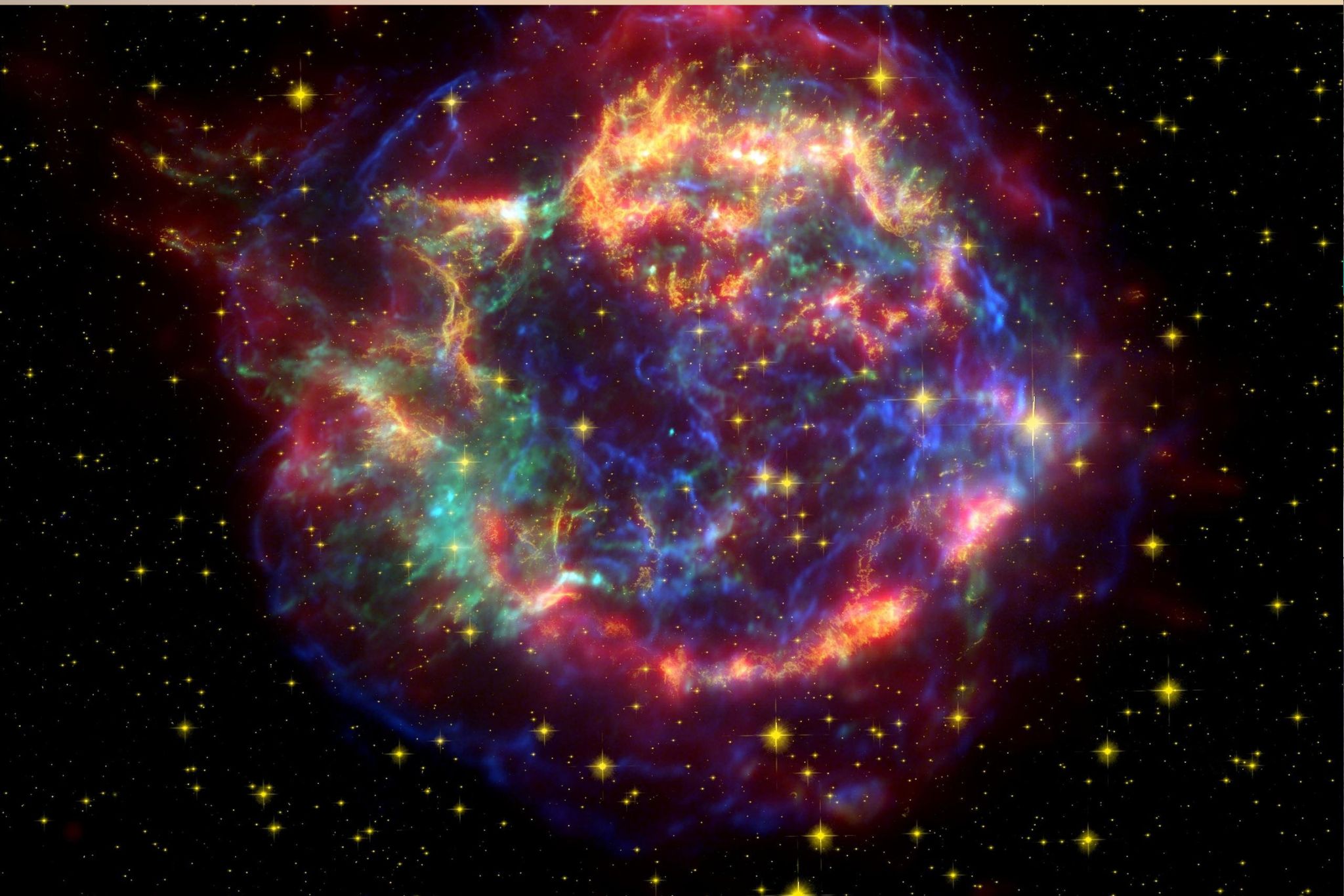AI’s rise to grace happened in stages. Every level that they upgraded itself to was directly proportional to the increasing level of autonomy that they assumed. The secret to discovering its potential lies in shedding any and every human intervention. Nevertheless, almost all developments of AI, thus far, have a role dedicated to humans. But this time around there is an exception. A procedure with zero human involvement, backed by a new AI system, has accomplished the great feat of detecting, identifying and classifying its first supernova. The first achievement of its kind. It appears that in the field of astronomy, AI is living up to its promise by stepping in to complete arduous and time-consuming tasks. By bringing together robotic telescopes and machine learning algorithms, AI not only spotted a supernova but validated it and successfully shared the information with the astronomy community in no time at all.
What is a supernova?
Simply, an event that takes place once a star reaches the end of its life span. A supernova is a humongous explosion resulting from the death of a star that is typically more than eight times the size of our Sun. During the star’s life cycle, they generate heat by burning fuel in their cores, which in turn creates outward pressure, counteracting the inward gravitational forces trying to compress the star. While this balance continues to exist for as long as the star lives, as it slowly expires its fuel and cools down, the outward pressure wanes. When the pressure dips by significant levels, gravity seizes control, causing the star to rapidly collapse in a matter of seconds. This sudden collapse is what triggers the cataclysmic event known as a supernova.
How did AI detect a supernova?
Previously, humans in conjunction with machines were required in order to complete the task of keeping an eye out for a supernova, spotting one and computing data on it. The new system that was led by Northwestern University, USA in collaboration with international partners, has revolutionised the search for new supernovae in the night sky by removing the human element from the loop and automating the process. It is claimed that an independent-devoid-of-human-intervention approach as such not only speeds up the analysis and classification of supernovae but also thins the potential for human errors.
The system, known as the Bright Transient Survey Bot (BTSbot), has been officially introduced to the astronomical community, marking a pivotal moment in supernova discovery. BTSbot is a machine-learning algorithm that has been extensively trained using an unbelievably large dataset of over 1.4 million images originating from nearly 16,000 distinct sources. The biggest plus point that it brings to the table is its ability to save up on time. Within the course of the past six years, humans have dedicated approximately 2,200 hours to visually inspecting and categorising supernova candidates. That is roughly more than an entire year’s worth of human effort that could have been invested in doing more productive and exciting tasks. With the advent of BTSbot, researchers can now redirect this valuable time to other research tasks, stepping up the pace of discoveries by a notch or two.
As opposed to humans, fortunately, BTSbot is not one to be a victim of boredom, making it the ideal candidate for the monotonous task of scouring astronomical data. Additionally, it seamlessly inserts itself into the existing automated infrastructure employed by the supernova-hunting community. This is why BTSbot’s maiden discovery of this supernova, known as SN2023tyk, was a walk in the park. Even though this supernova had already been identified through traditional manual searches, the thrill and excitement of AI rediscovering it still stands.
The Zwicky Transient Facility (ZTF) initially detected SN2023tyk on 3 October. In real-time, BTSbot gathered and meticulously analysed the data related to this discovery. Two days later, on 5 October, the algorithm signalled the detection of something significant. What transpired next underscores the crucial role of integration in contemporary scientific research.
Rather than immediately conveying its findings to its human operators, BTSbot took its time to confirm the supernova’s existence and obtain additional spectral data. It reached out to the SED Machine robotic telescope situated at the Palomar observatory for further observations. Once the SED Machine generated the supplementary data, BTSbot seamlessly relayed this information to another automated program named SNIascore, a creation of Dr. C. Fremling at Caltech.
Adam Miller; Assistant Professor of physics and astronomy at Northwestern’s Weinberg College of Arts and Sciences and is affiliated with the Center for Interdisciplinary Exploration and Research in Astrophysics (CIERA) who spearheaded this development, while speaking about the achievement, highlights how this marks a leap for humanity and anticipates that further refinements will allow these robots to identify specific subtypes of supernovae. Eliminating human intervention provides researchers with more time to analyse their observations and formulate new hypotheses regarding cosmic explosions.
From Galielo’s telescope to the BTSbot, technology has come a long way. What took astronomers years to do, the bot can do within a blink of an eye. The progress is impressive. While the frenzy around AI is mostly associated with negative thoughts and comments, especially when it comes to removing the middleman (i.e. humans), this occasion warrants a different sentiment altogether. The aspect of taking humans out of the supernova-spotting equation is not because the world of astronomy is looking to replace humans, but it is to give them more space and time to channel their energy to complete high-intensity tasks. AI holds the power to reduce the time-consuming tasks in various astronomy-related domains. Models like BTSbot can also expedite the identification of exoplanets, a task that could occupy humans for an uncountable number of hours. Therefore, so far, this attempt looks like a win-win situation.
(Sandunlekha Ekanayake)
